Media | Articles
According to you: Your favorite name for an engine
The comments quoted in this article have been edited lightly for clarity and house style. —Ed.
Turns out there are lot of great engine names out there! You, a member of the Hagerty Community, helped fill my list with engine names that stood the test of time. Or at least been memorable enough to never forget. And some were just nicknames that caught on! No matter the name’s popularity or where it came from, here is your list of favorite engine names!
Blue Flame
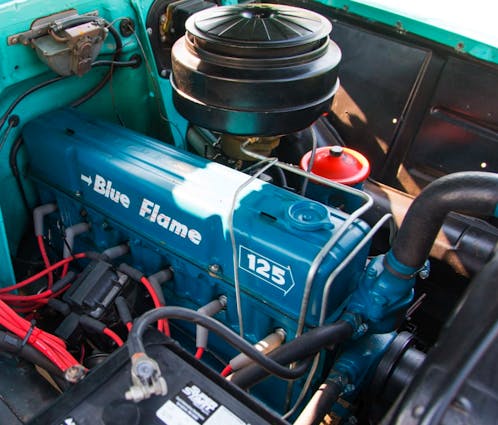
You just gotta keep the flame for Chevy’s famous inline six cylinder engine. It powered so many vehicles, ranging from the work-ready to the weekend fun generated by the original Corvette. It’s almost a shame we only got two upvotes for it!
- Peter: The “Blue Flame Six” baby!!
- DUB6: Yeah, I always thought Blue Flame Six was a catchy name for an engine.
HEMI
I was a little surprised to see that only one person (@JBD) mentioned Chrysler’s famous Hemi V-8. Or maybe this comes as no surprise, as the name is so common that the Hagerty Community wanted to dig up other names that we might have forgotten?
AMC Torque Command & Typhoon

Be it the V-8 or the straight-6, AMC’s Typhoon name was so catchy and so perfect for the era. There was even a special edition AMC Rambler called the Typhoon in 1964, but the name lived on in their engines.
Marketplace
Buy and sell classics with confidence
- Gregory: AMC’s “Typhoon” is my favorite.
- Adam: 343 Typhoon by American Motors.
Mopar Grab Bag
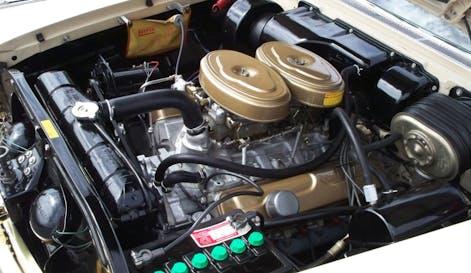
Thanks to Commando, Super Commando, Magnum, Wedge motors, and likely many more, the Chrysler brands likely had the coolest engine names of any manufacturer. Be it Chrysler, Dodge, Plymouth, and DeSoto, there are so many names to love:
- Safetyguy: My ’63 Plymouth says “Golden Commando POWER” on the fender badge but has a 318 poly head, the “Semi Hemi” small big-block.
- Tom: Super Commando is another one I remember from high school days.
- JBD: Magnum, Super Commando.
- Grant: Sonoramic Commando Power.
- Stephen: Plymouth “Golden Commando Power” and Dodge “Super Red Ram” are two of my favorites.
- TA: Super Commando, Magnum.
- Clare: Dodge’s baby hemi, the “Red Ram.” A fantastic little engine at 241 cubes (basically 4.0 liter), but what a HEAVY SLUG. Just about pulled the chicken barn down pulling the engine and trans out of my ’53 Coronet!!
- Paul: Chryslers Golden Lion 361 four-barrel.
- WLB: The Chrysler Firepower and DeSoto Firedome Hemis.
Buick: Nailhead and Wildcat

While giving catchy names to engines in more premium luxury cars wasn’t commonplace, Buick had the Nailhead and the later Wildcat V-8s.
- Robert: Nailhead by Buick!
- DUB6: Not sure if Nailhead was actually a name that Buick coined, but it sure is descriptive enough if one knows what it means (most of the general public doesn’t, I think).
- KJ: I’m still ol’ school: 6 – 2s on a 425 Nailhead!
- Mark: Nobody mentioned the Buick Wildcat engines? (Sad but true, luckily you resolved that! – Ed.)
Iron Duke

The famous Iron Duke was as tough as the name suggested, if tragically short on power and refinement for many automotive applications where it saw frequent use. Luckily I am not the only person who loves this little motor and its fantastic name.
- DUB6: Iron Duke sticks in my mind as memorable.
- Mark: My favorite name is Iron Duke.
Willys Tornado & Go Devil

Did the Willy’s Go Devil (L134) engine win World War II for the good guys? Not singlehandedly, but it was a big part of getting people in the right place at the right time. But it wasn’t the only name from Willys:
- Dean: Go Devil Willys L134.
- JohnfromSC: Tornado by Willys.
- Reggie: The Jeep Willys “Go Devil.” That’s quite a name; I would drive that into war.
- Ren: Willys “Go Devil” flathead four used in WWII jeeps and early CJs.
Ford: Interceptor, Boss, Cobra Jet, Super Cobra Jet
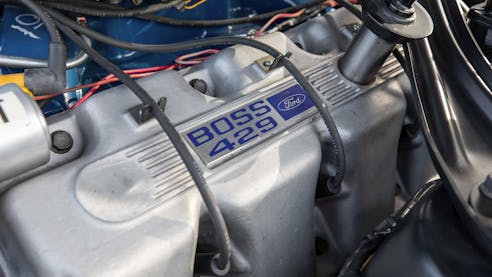
The Blue Oval folks weren’t short of catchy engine names in the 1950s and ’60s, especially for their big block V-8 engines:
- Mark: You’ve got include the BOSS engines by Ford. They encompassed the slang of the day and they’re still respected almost 50 years later.
- Gayle: Ford Interceptor.
- Mark: Fords 428 Cobra Jet, Super Cobra Jet, and Police Interceptor!
Gray Marine Fireball

Not to be outdone by their land based counterparts, marine applications had memorable names too. Gray Marine did the boating world a solid with its name for the AMC-derived V-8 that powered many boats during the muscle car era.
- Mark: Gray Marine Fireball V-8. I have one in my Century Resorter wood boat. It is modified for marine use, based on a 1950s 250-cu-in AMC engine. Reliable and rugged.
Air Cooled says it all?
American manufacturers dominate the landscape of “cool names for engines,” but that’s not to say that other manufacturers haven’t earned a catchy phrase or two for their creations.
- Ray: Simple, descriptive, succinct, reliable, and immediately identifiable: “Air-cooled Flat-Six.” And for us older guys, a name across two brands: “Air-cooled Flat-Four.”
Oldsmobile: Jetfire, Rocket & Ramrod

Not to be outdone by competition from Pontiac and Chevrolet, Oldsmobile had memorable engine names that were absolutely worthy of their Rocket-themed designs of the mid-century era.
- BigRig12: My car’s engine has the best name, 455 Rocket!
- Jim: I always liked “ROCKET 88.”
- Tom: Easily the Oldsmobile Jetfire with Turbo-Rocket V-8 engine snorting Turbo-Rocket Fluid, as water methanol injection. Had the fluid tank been three times the size, or the compression been 7–8, it might have hung around a little longer.
- Ed: My buddy had a big Oldsmobile (late ’60s, I think) and on the air cleaner it said, “Oldsmobile 425 Ultra High Compression Super Rocket.”
- Mood-O: How about the “Ramrod” 350?
The Leaning Tower of Power & Hyper-Pak

Chrysler’s Slant 6 has a well-deserved reputation for durability, affordability, and being easy to work on. That said, the Slant 6 wasn’t just a workhorse, it could be tweaked and tuned for a big more fun.
- World24: I like the “Leaning Tower of Power” because that sounds a bit cooler to me.
- Gary: How about the 1960–61 Plymouth “Hyper Pak” high-performance slant-six engine?
Flathead, Panhead, Knucklehead, & Shovelhead
While being accurate, the “valve in block engine” is a rather boring description of this type of engine design. Flathead accomplishes the same description, but from a different vantage point. And there’s another “heady” description for engines of the Harley Davidson variety too!
- TGJ: How about the Knucklehead, Panhead, and Shovelhead?
- OldFordMan: Of course, FLATHEAD V-8!
Chevrolet: Mystery Motor, Turbo-Jet, Ram Jet

There was something about Chevrolet engine names of the era, as they felt more functional and less emotional, less dramatic as your average Mopar, Pontiac, or Buick name.
- Jack: ’57–65 “Ramjet” Fuel Injected SB chevys.
- Dynoking: Turbo Jet, big block Mystery Motor.
High Output

The comment below triggered memories of the 1980s for me, hence the photo above. Ford made a big deal about the increasing levels of power its engines were getting as it put the Malaise Era in the rear view, be it from 5.0 Mustangs or 1.9-liter Escorts. General Motors did it too, with everything from the famous small block Chevy to Oldsmobile’s Quad 4. So thanks to @Erik for both reminding me of the ’80s, and teaching me about the 455 HO from Pontiac!
- Erik: I would add (HO) High Output for the 455 HO to the mix from 1971 and ’72. It had the Ram Air IV top end. Quite a nice motor with loads of torque and able to make 13-second time slips out of a low compression motor.
Dauntless V-6

Buick’s Fireball V-6 has a story no other engine could tell, and part of it includes its connection to Kaiser-Willys:
- Dean: When Kaiser-Willys bought the Buick V-6 tooling, it called the new engine the Dauntless V-6. When the oil crisis hit, GM took a Dauntless and put it in a Nova (or Buick Apollo) and determined that it would really help bring the gas mileage CAFE up. They bought the tooling back, and the rest is history.
Ford Vulcan
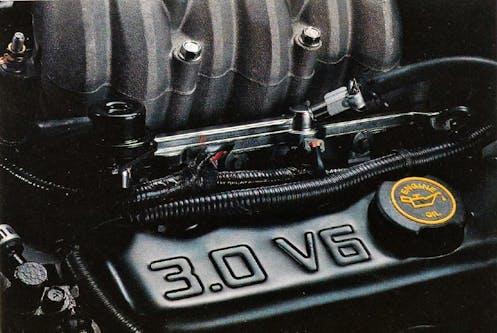
Is it possible that the most memorable engine name in Ford’s lineup is for a motor that powered the original Taurus? Believe it or not, we didn’t get a lot of love for the Coyote V-8 in our initial question, but we got one hit for this cast iron workhorse:
- Chuck: “Vulcan” by Ford.
RPO codes

Codes aren’t a name, are they? Sure, but consider how revered certain RPO codes are in the classic car market. Maybe the three codes below will change your mind, because they instantly conjure up images of unmatched performance and exclusivity:
- Jack: Chevy’s legendary RPO codes. ZL1, L88, and LS6.
Induction-Specific Names
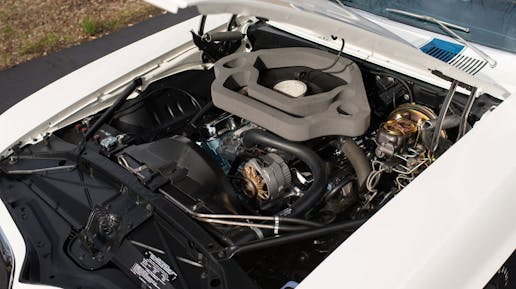
Feeding air into an engine can be fantastic inspiration for a catchy engine name. The act of doing the deed better than others can be distilled into a word or three, right? That said, is it possible to come up with an exhaust-centric name for an engine?
- Vern: Pontiac Tri-power! Three deuces and a four-speed, and a 389! 😀 It’s all about my little GTO. 😉
- jim: Pontiac Ram Air IV, and the Formula 400 (I’ve got one of those).
- Peter: “Three deuces” still turns my crank in my ’65 GTO.
- TA: Six Pack, Ram Air.
- Jon: You all missed the most classic of classic names … the one and only, Spider Turbo-Charged Corvair!
Pontiac Trophy & Sprint 6

While we have sprinkled Pontiac references above, it’s about time they got the same “stand alone” treatment given to Chevrolet, Oldsmobile, and Buick.
- Reggie: Pontiac’s inline-six, named “OHC 6 Sprint”
- Gayle: Pontiac “Trophy V-8”
Napier Deltic

An engine that complicated deserves a unique name, don’t cha think? The triple crankshaft equipped Napier Deltic likely didn’t stand the test of time for many reasons, but the power it must have put out in its heyday woulda been spectacular to behold in person.
- Slow Joe Crow: Napier Deltic, almost as incomprehensible as the engine itself with 18 cylinders and three crankshafts.
EcoBoost (R.I.P. Twin Force)
Our very own @DUB6 probably gave us the best comment, even though he may not know the whole truth behind the name. In his words:
“I’m not sure I can isolate a favorite, but I think I know my LEAST favorite: EcoBoost!”
Agreed! But did you know that EcoBoost wasn’t the original name for the first of this engine family? It was Twin Force, making its debut in the 2007 Lincoln MKR concept car. Between that moment and the production of the 3.5-liter, twin-turbocharged V-6 came a name change to the a more Eco-friendly, greenwashed name. While greenwashing is an issue (i.e. turbo boost is not terribly fuel efficient), the name easily transferred to four-cylinder Fords with a single turbocharger: Can’t make that happen with Twin Force.

But still, if I wanted to help the environment, I’d be taking mass transit. You can’t have your cake and eat it too, so perhaps Devries Designs did a better job than Ford? Because when you have a turbo with boost optimized by a computer, why not make an Eco-BEAST instead?
***
Check out the Hagerty Media homepage so you don’t miss a single story, or better yet, bookmark it. To get our best stories delivered right to your inbox, subscribe to our newsletters.


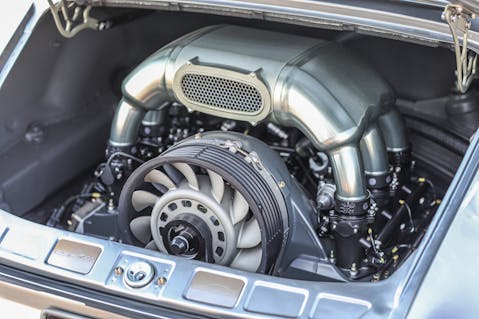

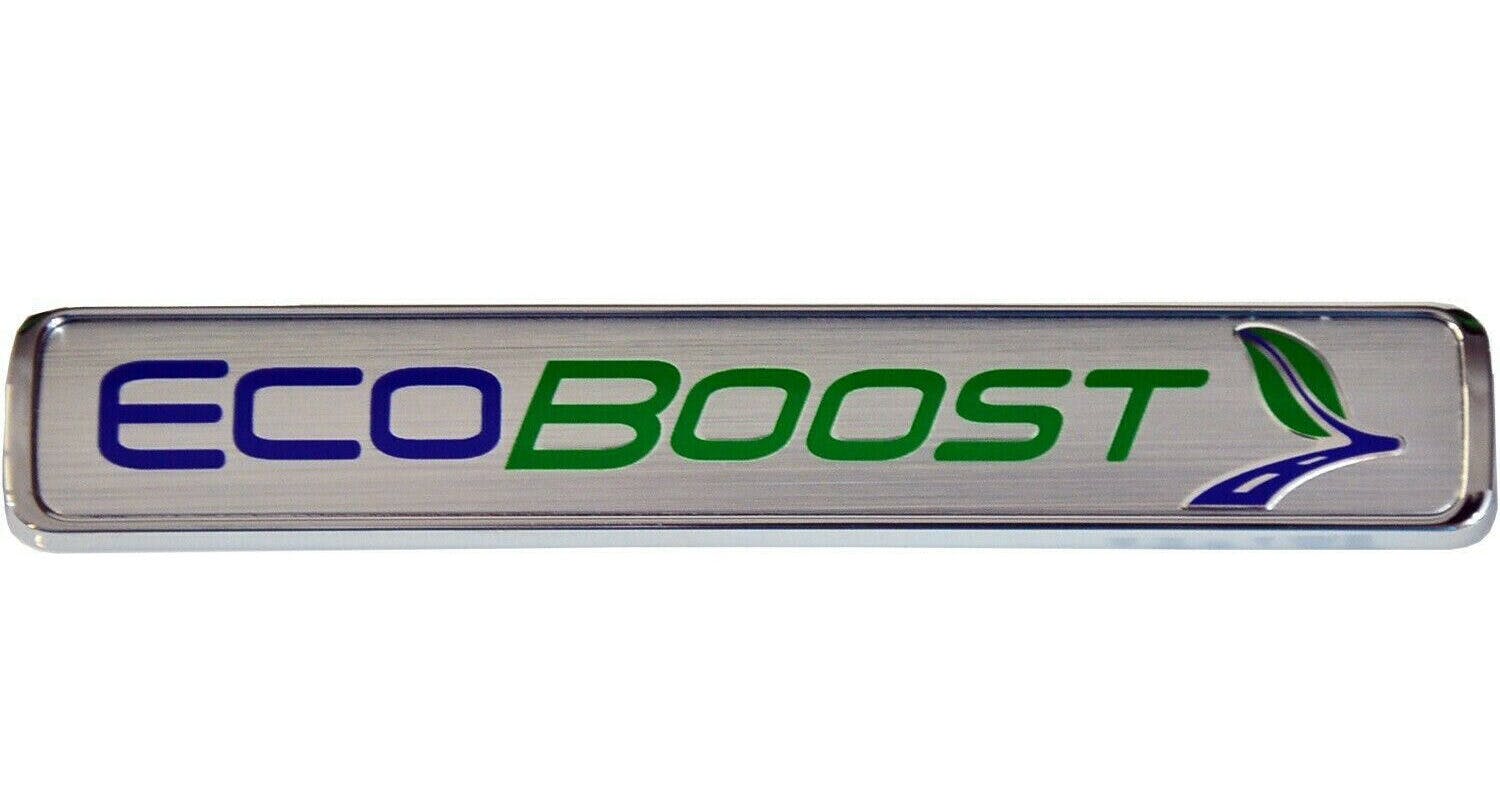














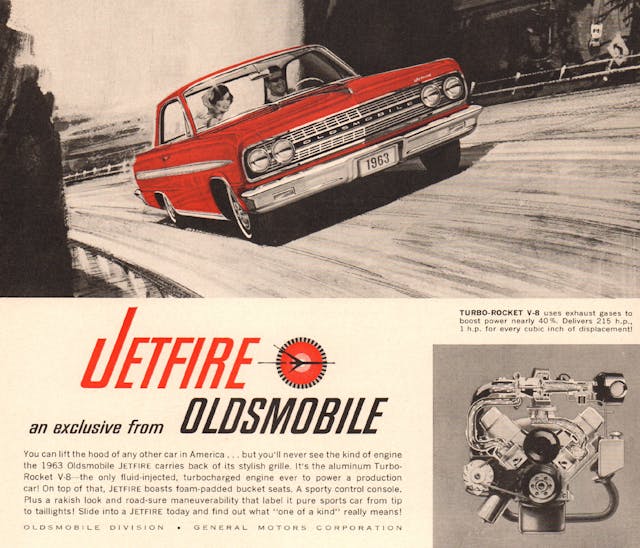




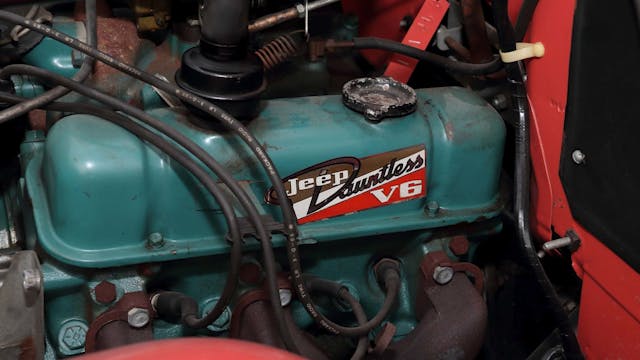

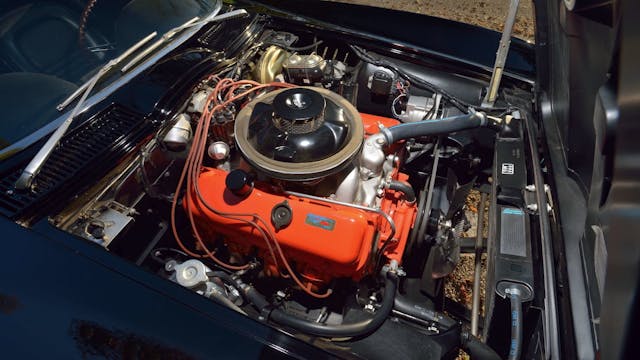





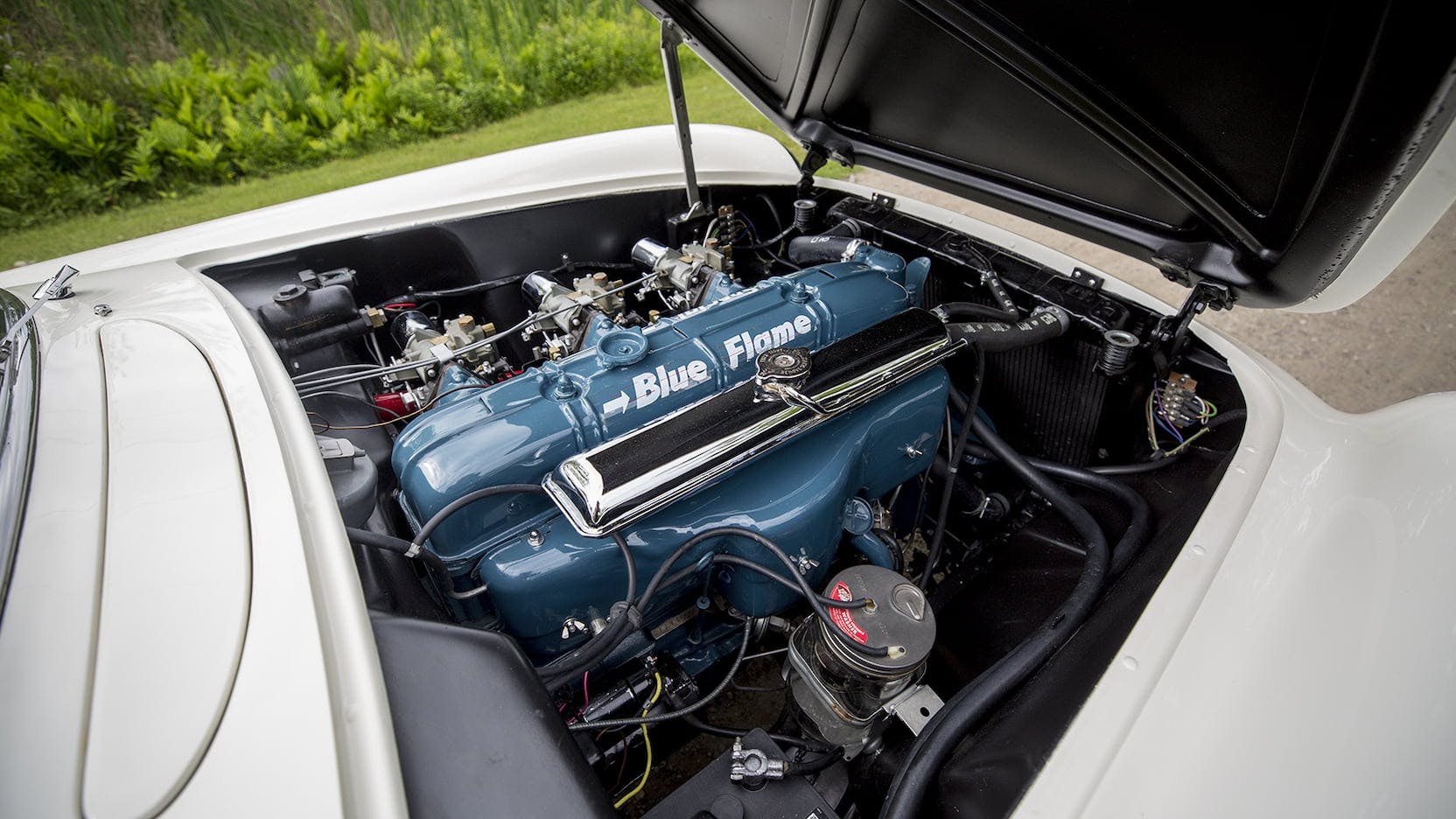
Lancia Volumex. Supercharged 2 liter.
Coyote……….love the name, love the engine.
I have a Kaiser Frazier SUPERSONIC in my 46 CJ2A. It has 68 horses instead of the usual 60 horses from a stock Go Devil. I am thinking of adding wheeley bars. I believe these engines were supplied by Sears and Roebuck.
ro
🙂 🙂 🙂
Wow, no love for Powerstroke? Triton?
Note for Pontiac 1966-69 OHS 6: Sprint was for the four barrel version. Innovative and relatively quick, but overshadowed by the V8’s. Could have cam oiling problems that kill the top end. Many Chevy 6 parts can fit (292 crank will fit with effort). Pontiac even did some engine studies to put a belt driven OHC head on the V8’s but cost was an issue. Just think how far ahead they would have been on the American car front? The only other COMMON American production vehicles that had OHC in the 60’s was the 230 in the Kaiser Jeep trucks.
What about Ford’s first overhead valve V8 manufactured from 1954 to 1964. The famous Y-Block!
I do NOT know how I missed this request! 🙁
I MUST add TURBO-FIRE and BUILT BY CHEVROLET TONAWANDA THE NUMBER 1 TEAM – with the geat logo with combination BOW TIE AND 1.
Nobody said ‘Mouse’ (Chevy small block), ‘Porkypine’ (Chevy big block), or ‘Elephant’ (Chrysler Hemi).
327 mouse 427 rat
ford 390 the fe series
The Nash Ambassador of the 1950’s doesn’t get a lot of respect but the optional “LeMans Dual Jetfire” twin carb motor should. It came by its name honestly. When fitted in a Nash Healey it came in as high as 3rd overall at LeMans, beating the likes of Ferrari and Jaguar.
It reportedly did not require any oil added in 24 hours.
The best over the top name I ever heard was the “SonoRamic Golden Commando V8”
I mean a Commando V8 is tough enough, and a Golden Commando V8 must be super tough. Can we even imagine a SonoRamic Golden Commando?
Ford SOHC Cammer
Not used in land vehicles often, but Rolls Royce Merlin
I cannot believe the ROCKET V8 by Oldsmobile is not t,ntioned
Super Duty was a legendary Pontiac, both in the 60’s and 70’s.
DZ was common when referring to an early Z/28 motor.
W series for Oldsmobile had meaning.
Stage 1 for Buick.
Although a few had valve cover / air cleaner identification, some with badging, many of the muscle cars had little to advertise a special engine.
One of the most obscure wolf in sheeps clothing I ever saw was an 1966 L 69 F85. Tri Power, W30, 4 speed, bench seat, 4.33 posi. Battery was factory installed in the trunk.
At Scottsdale this year a Wildcat with 2 4’s and a 4 speed caught my eye.
Maybe an interesting article could be roughly based around how back then you could tick off some boxes on an order sheet for combinations that defy normal logic. Maybe you can dig up a 1964 442 station wagon.
Back in the early 70’s, some combinations I ran into and thought may have been someone pieced it together, actually could have been factory built. Kind of along this line is the 1968 Z/28 convertible. It exists as a one of one, with documentation.
My dad swore he saw a 1966 Dodge Coronet Deluxe station wagon with a Hemi and a 4 speed. It was at the old Chrysler depot in Itasca, Illinois in late 1965. He was looking for a wagon with a stick at the time and he thought he hit pay dirt when he saw the floor shifter. Then he saw the sticker. The Hemi was a very expensive option. Needless to say he passed on that one and continued looking.